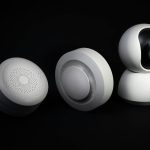When it comes to gaming, the material of your mousepad can make a real difference in tracking speed. You might find that cloth pads offer a softer feel, which can enhance precision, but they may slow you down. On the other hand, plastic mousepads provide a slick surface for quick movements. Curious about how glass and hybrid options fit into this equation? Let's explore their unique characteristics and what might suit your gaming style best.
Table of Contents
Key Takeaways
- Plastic mousepads offer a slick surface, promoting fast movements and higher tracking speeds, ideal for fast-paced gaming.
- Cloth mousepads provide varied textures; finer textures enhance precision, while coarser ones increase friction, affecting tracking speed.
- Glass mousepads balance precision and glide, making them suitable for tasks requiring fine control, like graphic design, impacting tracking performance.
- Hybrid mousepads combine cloth and hard surfaces, allowing for both speed and control, catering to different gaming styles and preferences.
- Surface texture significantly influences sensor performance; smooth surfaces promote faster movements, while rough surfaces may slow down tracking accuracy.
Understanding Mousepad Materials
When you dive into the world of mousepads, you'll quickly realize that their materials play a crucial role in your overall gaming or work experience. The surface material directly affects how smoothly your mouse glides, impacting tracking precision and speed.
Common materials include plastic, rubber, and cloth, each offering unique characteristics. Plastic pads often provide a slick surface for fast movements, while rubber pads give a sturdy grip. Some mousepads combine multiple materials to balance speed and control, catering to various preferences.
Understanding these materials helps you choose the right mousepad that suits your play style or work needs. So, consider what you prioritize: speed, control, or a mix of both, to enhance your productivity or gaming performance effectively.
Cloth Mousepads: Speed and Control
When you use a cloth mousepad, the surface texture plays a crucial role in your tracking speed and control.
It can either enhance your precision or slow you down, depending on how it interacts with your mouse sensor settings.
Understanding this relationship will help you optimize your gaming or work experience.
Surface Texture Impact
Although cloth mousepads are often preferred for their comfort, the surface texture plays a crucial role in determining both speed and control during use.
A finer texture can enhance precision, giving you better control over your movements, which is essential for tasks requiring accuracy. Conversely, a coarser surface can increase friction, allowing for slower, more deliberate actions.
If you're gaming or working on graphic design, you'll want to find the right balance. Pay attention to how different textures affect your mouse's glide; some may suit fast-paced actions, while others might benefit slower, more careful maneuvers.
Experimenting with various cloth options can help you discover what works best for your specific needs and preferences.
Optimal Mouse Sensor Settings
To maximize your experience with cloth mousepads, you'll need to fine-tune your mouse sensor settings for the perfect balance of speed and control.
Start by adjusting your DPI (dots per inch) settings; a higher DPI allows for quicker movements, while a lower DPI provides better precision. Experiment with values between 800 and 1600 DPI, as they often strike a good balance for various tasks.
Next, consider your sensitivity settings in your mouse software. Lower sensitivity settings can enhance control during intense gaming sessions, while higher sensitivity may favor rapid movements.
Lastly, ensure your polling rate is set between 500 to 1000 Hz for smooth tracking. Finding the right combination will help you get the most out of your cloth mousepad.
Plastic Mousepads: Quick Movements
Plastic mousepads are known for their ability to facilitate quick movements, making them a favorite among gamers and professionals alike. Their smooth surface provides minimal resistance, allowing your mouse to glide effortlessly. This characteristic is crucial during fast-paced gameplay, where every millisecond counts.
You'll find that rapid flicks and sweeping motions become more precise, enhancing your overall performance. Moreover, plastic mousepads often feature a low-friction design, which means you can make swift adjustments without losing control.
They're also lightweight and portable, making it easy to take your gaming setup on the go. With a variety of textures available, you can choose one that best suits your play style, ensuring you stay at the top of your game.
Glass Mousepads: Precision and Glide
Glass mousepads offer a unique blend of precision and glide that can elevate your gaming or work experience. The smooth surface of glass allows your mouse to glide effortlessly, reducing friction and enabling swift movements.
You'll notice enhanced accuracy with every swipe, making these pads ideal for tasks requiring fine control, like graphic design or competitive gaming.
Additionally, glass mousepads often feature a sleek, modern aesthetic that complements your workspace. They're also easy to clean—just a quick wipe, and you're good to go.
However, keep in mind that while glass provides excellent glide, it mightn't suit everyone's preference, especially if you're used to a rougher surface.
Hybrid Mousepads: The Best of Both Worlds
While some may prefer a specific surface type, hybrid mousepads offer a balanced solution that caters to various needs.
These mousepads combine the benefits of cloth and hard surfaces, providing versatility for different gaming styles.
Here's why you might consider a hybrid mousepad:
- Speed and Control: Enjoy smooth gliding with precise tracking, ideal for both fast-paced gaming and intricate tasks.
- Durability: Many hybrid options are designed to withstand wear and tear, lasting longer than traditional cloth pads.
- Easy Maintenance: Most hybrid mousepads are easier to clean than cloth-only varieties, ensuring a tidy workspace.
- Comfort: The soft texture of cloth combined with a solid base gives you comfort during long gaming sessions.
With these advantages, hybrid mousepads can enhance your overall experience.
Factors Influencing Tracking Speed
When it comes to tracking speed, several factors can make a noticeable difference.
You'll find that surface texture variations, material composition, and mouse sensor compatibility play crucial roles in how smoothly your mouse glides.
Understanding these elements can help you choose the right mousepad for your needs.
Surface Texture Variations
As you explore different mousepad materials, you'll quickly notice that surface texture plays a crucial role in influencing tracking speed.
The texture can significantly affect how smoothly your mouse glides, which ultimately impacts your gaming or work performance.
Here are four key factors to consider:
- Smoothness: Smoother surfaces provide less resistance, allowing for faster movements.
- Grip: A textured surface can offer better control, especially during rapid actions.
- Friction: High-friction textures can slow you down, while low-friction ones enhance speed.
- Consistency: A uniform texture ensures predictable tracking, helping you maintain accuracy.
Choosing the right surface texture can make all the difference in your overall experience, so consider your needs carefully!
Material Composition Impact
The material composition of your mousepad can significantly influence tracking speed, impacting your overall performance. Different materials, such as cloth, plastic, or metal, offer distinct levels of friction and glide.
For instance, a cloth surface provides a smoother, more controlled experience, ideal for precision tasks. On the other hand, a hard plastic surface might enhance speed but can lead to less control.
Additionally, the thickness and density of the material affect how the mouse interacts with the surface. A thicker pad can absorb more movement, while a denser one may provide a firmer response.
Ultimately, choosing a mousepad that aligns with your playing style can make a noticeable difference in your tracking speed and overall gaming experience.
Mouse Sensor Compatibility
Understanding mouse sensor compatibility is crucial for optimizing tracking speed, especially since different sensors react uniquely to various surfaces.
To enhance your mouse performance, consider these factors:
- Sensor Type: Optical and laser sensors have different capabilities; optical sensors excel on textured surfaces, while laser sensors perform better on smooth ones.
- DPI Settings: Higher DPI settings require more precision; ensure your mousepad can handle these levels without losing tracking accuracy.
- Surface Texture: A rough surface might enhance grip, but it could slow down a high-DPI sensor.
- Calibration: Regular calibration can help your mouse adapt to different surfaces, improving tracking speed.
Choosing the Right Mousepad for Your Style
How do you choose the right mousepad to match your gaming style or work habits?
Start by assessing your needs: are you a fast-paced gamer or do you prefer precision? For speed, look for a smooth surface like hard plastic, which allows quick glides. If accuracy is your game, opt for a textured cloth pad that offers more control.
Consider your mouse type, too; some sensors perform better on specific materials.
Think about size—larger pads provide more room for sweeping movements, while smaller ones suit compact setups.
Finally, don't forget aesthetics; a mousepad that matches your setup can enhance your gaming or work environment.
Choose wisely, and you'll elevate your experience!
Frequently Asked Questions
Do Mousepad Colors Affect Tracking Speed?
Mousepad colors can influence how your mouse sensor reads the surface. Darker colors might absorb more light, potentially affecting tracking speed. Experimenting with different colors could help you find what works best for your gaming needs.
Can Surface Texture Impact Mouse Sensitivity Settings?
Yes, surface texture can definitely impact your mouse sensitivity settings. A rough texture might require higher sensitivity for quick movements, while a smoother surface allows for lower sensitivity, giving you more control during precise actions.
How Often Should I Clean My Mousepad?
You should clean your mousepad every few weeks, but if you notice dirt or stains, do it sooner. Regular cleaning helps maintain performance and hygiene, ensuring your mouse glides smoothly and accurately during use.
Are Thicker Mousepads Better for Tracking Speed?
Thicker mousepads can provide better cushioning and stability, which might improve tracking speed for some users. However, it often depends on personal preference and the type of mouse sensor you're using. Experiment to find what works best!
Do Larger Mousepads Improve Overall Performance?
Larger mousepads can definitely enhance your overall performance. They give you more room to maneuver, reducing the chances of running off the edges, which helps maintain consistent tracking and improves your gaming or work experience.




